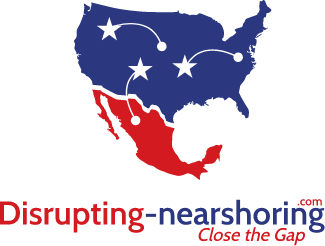WHY NEARSHORING
Why Nearshoring To Mexico Is The Smart
Choice For Your Manufacturing Needs
Daniel Zaga
Economic Analysis Director |
Deloitte Spanish LATAM
0:00
/
0:00
Listen to Podcast
WHAT OPPORTUNITIES HAVE ARISEN?
Not everything, however, is gloomy. Disruptions caused by the pandemic and the war in Europe have also given rise to some growth opportunities for Latin America
Geographical proximity to any of the three hubs is of prime importance in nearshoring. Naturally, among Latam countries, Mexico stands to gain the most from this new development, because of its vicinity to the United States. In fact, it has already started to reap the benefits, reflected in high foreign direct investment (FDI) inflows into Mexican states bordering the United States. While Mexico as a whole reported a 4% decrease in FDI in 2021 against the average from 2015 to 2019, its northern states of Baja California, Chihuahua, and Nuevo León recorded increases of 54%, 6%, and 4%, respectively.* The Inter-American Development Bank estimates that nearshoring could add US$78 billion to Latam’s exports every year, from which US$35 billion would go to Mexico and US$7.8 billion to Brazil. Industries such as automobile, textiles, pharmaceuticals, and renewable energy could benefit the most

Daniel Zaga
Economic Analysis Director |
Deloitte Spanish LATAM
0:00
/
0:00
Listen to Podcast
MEXICO - AT THE CUSP OF RECOVERY
In light of recent global supply chain disruptions, policymakers and businesses around the world have started to take steps to mitigate the consequences these disruptions may have on them. This discussion became more relevant when a revamped North American Free Trade Agreement (NAFTA) took effect in mid-2020, in the form of the US-Mexico-Canada Agreement (USMCA),41 as former US president Donald Trump was trying to reshore companies’ production units back to the United States. However, production costs are far higher in the United States than in Mexico, a factor that is fueling discussions around nearshoring42 among US companies.43 Mexico is strategically positioned if this scenario becomes a reality, as the country offers close proximity to the US market, a young workforce with competitive wages (figure 6), a range of flexible trade agreements with more than 40 countries, and duty-free access to the United States—advantages that cannot be ignored.


